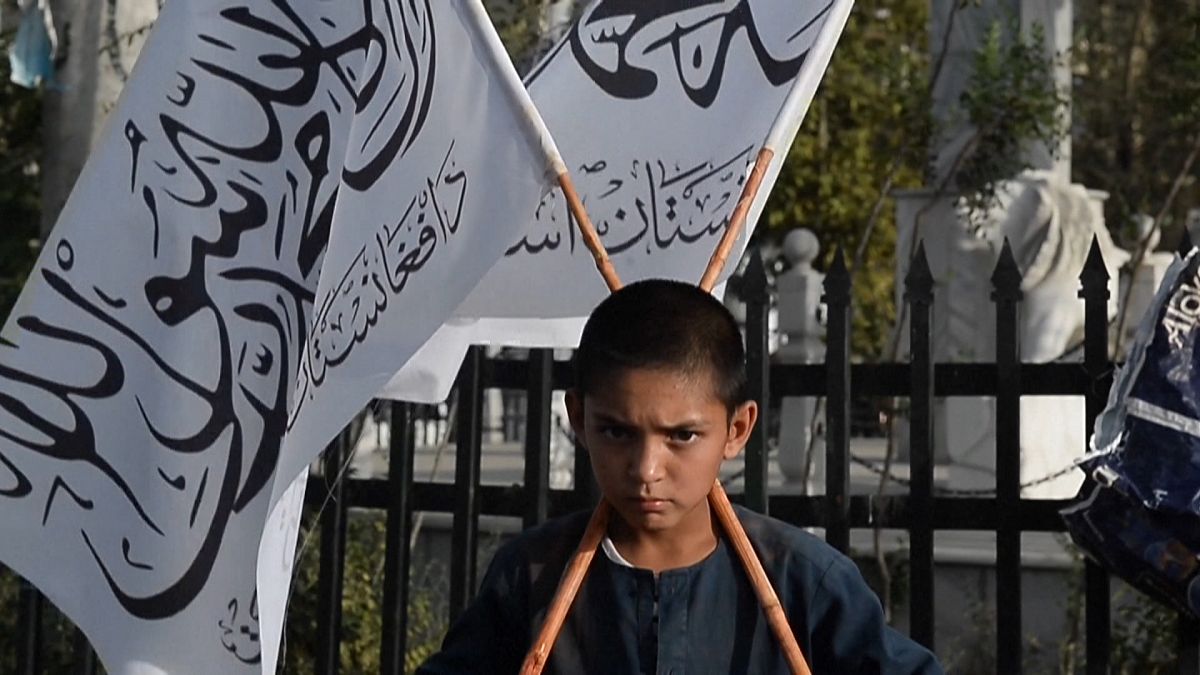It was a year of turmoil for Afghanistan and its people. From the Western withdrawal and evacuation to the Taliban's seizure of power - a look back at the tumultuous events of 2021.
It was a year of turmoil for Afghanistan and its people. From the Western withdrawal and evacuation to the Taliban's seizure of power - a look back at the tumultuous events of 2021.
Chaos as America’s longest war ends
The US withdrawal from Afghanistan in 2021 and the surge of the Taliban across the country, eventually leading to the seizure of Kabul, was epitomised by the chaotic scenes at the capital's airport as tens of thousands of desperate civilians tried to flee the country.
The speed of the Taliban's advance across Afghanistan in August took both the Afghan government and its Western allies totally by surprise. The Taliban's take over came almost as soon as foreign forces started pulling out, and nearly 20 years to the day since US forces first removed the group from power in 2001.
In April, US President Joe Biden finally declared the two decades of war was over.
"I concluded that it’s time to end America’s longest war. It’s time for American troops to come home," Biden declared.
'The War on Terror': a distant memory
The 9/11 attacks on New York and Washington, in which nearly 3000 people died, led to the US and its allies invading Afghanistan. Officials identified Islamist group al-Qaeda, and its leader Osama Bin Laden, responsible. Bin Laden was operating in Afghanistan.
US forces quickly intervened to oust the Taliban, with Washington vowing to support democracy and eradicate the terrorist threat. The resultant conflict killed tens of thousands of people. Millions more would be displaced. Of the victims, it was Afghans paid the heaviest price.
Chaos in Kabul
Over two chaotic weeks in August this year, the West managed to evacuate more than 100,000 Afghans from Hamid Karzai airport. Among the tens of thousands rescued were those that had worked with the US and its NATO allies, such as translators and other key workers.
Remarkable in scale, the evacuation was the biggest since the Berlin Blockade in 1949. But many of those at risk to Taliban reprisal were left behind and questions still persist as to why more was not done sooner.
Amid the chaos and panic, some 200 people, including 13 US soldiers, would also lose their lives. Killed after an ISIS-K suicide bomb ripped through the crowds gathering at Abbey Gate.
Afghanistan returns to the dark ages
Afghanistan is now back in the hands of the Taliban and women there face an uncertain future. Despite assurances from the group that it would not run the country like it had previously, girls in the country still remain barred from secondary school. A recent United Nations report claimed the country will plunge into further economic meltdown if it continues to exclude women from the workplace.
More worryingly however is Afghanistan's march towards starvation since the Taliban seized control. Experts say more than half the population is at risk of acute food insecurity this winter.
Deprived of international aid because of the West’s refusal to recognise the legitimacy of its new rulers, the UN’s World Food Programme recently warned that the country faces ‘the worst humanitarian disaster on Earth'.
